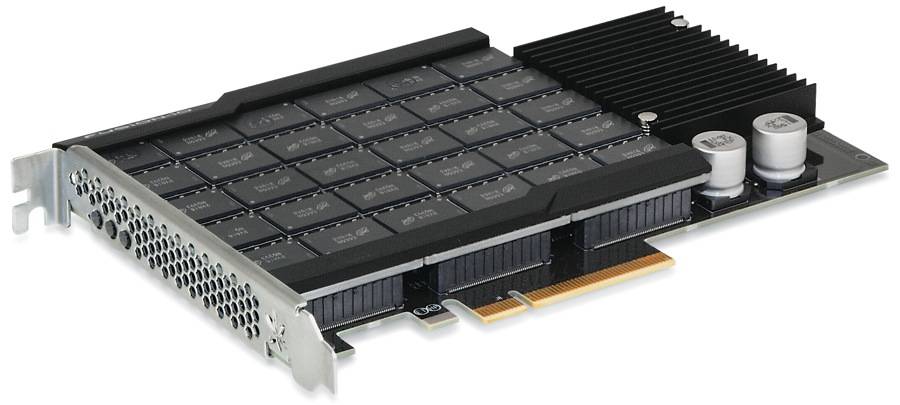This article is more than 1 year old
Fusion-io turns up wick on its product development cycle
Something new to drool over every year
Take note competitors; under new management Fusion-io is going to introduce major product developments every 12-14 months with mid-life kickers every 6-7 months.
This is a bit like Intel's tick-tock cadence, with a Fusion tick being a basic product architecture change, and a tock being a mid-life kicker or refresh.
In the kicker department we should expect a transition from the current use of 2X NAND flash (a 29nm - 25nm process geometry) to 2Y geometry, meaning 24nm - 20nm, in the existing ioDrive 2 and ioScale products.
This is likely to happen in or around July and should lower Fusion's flash purchase costs on a data capacity basis, as well as giving its controllers more to do to keep both performance and endurance high.
In the architectural change department we're looking at third generation ioDrive (ioDrive 3) products and second generation ioScale (ioScale 2?) products and the use of, for example, changed FPGA coding and refreshed VSL (Virtual StorageLayer software). This should happen in the second half of this year and, in our humble opinion, is likelier in the fourth quarter than in the third.
Once in place this architecture would be the basis for subsequent moves into 1X NAND (19nm - 15nm process geometry) and then, if all goes well, to 1Y geometry (14nm - 10nm) and then, if all goes well again, into 3-bit or triple level cell (TLC) flash.
We might imagine a move to 1X could be a kicker type refresh in 2014, with a move to 1Y following an architectural refresh at the end of 2014 or start of 2015 and taking place in or after mid-2015.

ioScale 3.2TB card
A TLC move would then be associated with or following an ioDrive 5 architectural refresh in early 2016. This roadmap for product development is based on what Fusion-io management said to Stifel Nikolaus analyst Aaron Rakers in a briefing.
Fusion-io management also talked about competition in the meeting, saying it thought Intel was the strongest competition in the hyper-scale/web-scale data centre space. Rakers is convinced Virident is probably Fusion-io's closest competitor in an architecture sense, and identifies EMC, which OEM's a Virident card for one of its XtremSF products, as a competitor to watch. EMC has already said it aims to compete at the ioScale product level with Fusion-io.
El Reg's storage desk notes Seagate is OEM'ing Virident's card technology in its X8 Accelerator product so the Virident-based competitive pressure on Fusion-io is hotting up. ®
